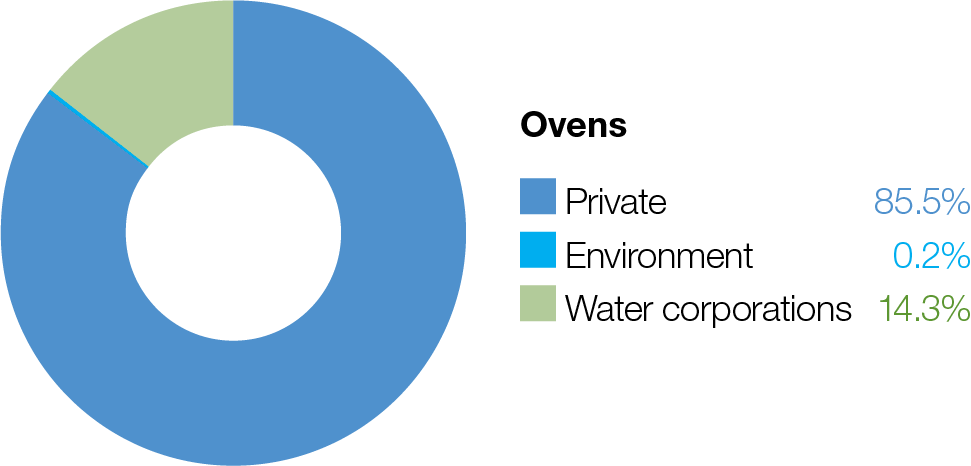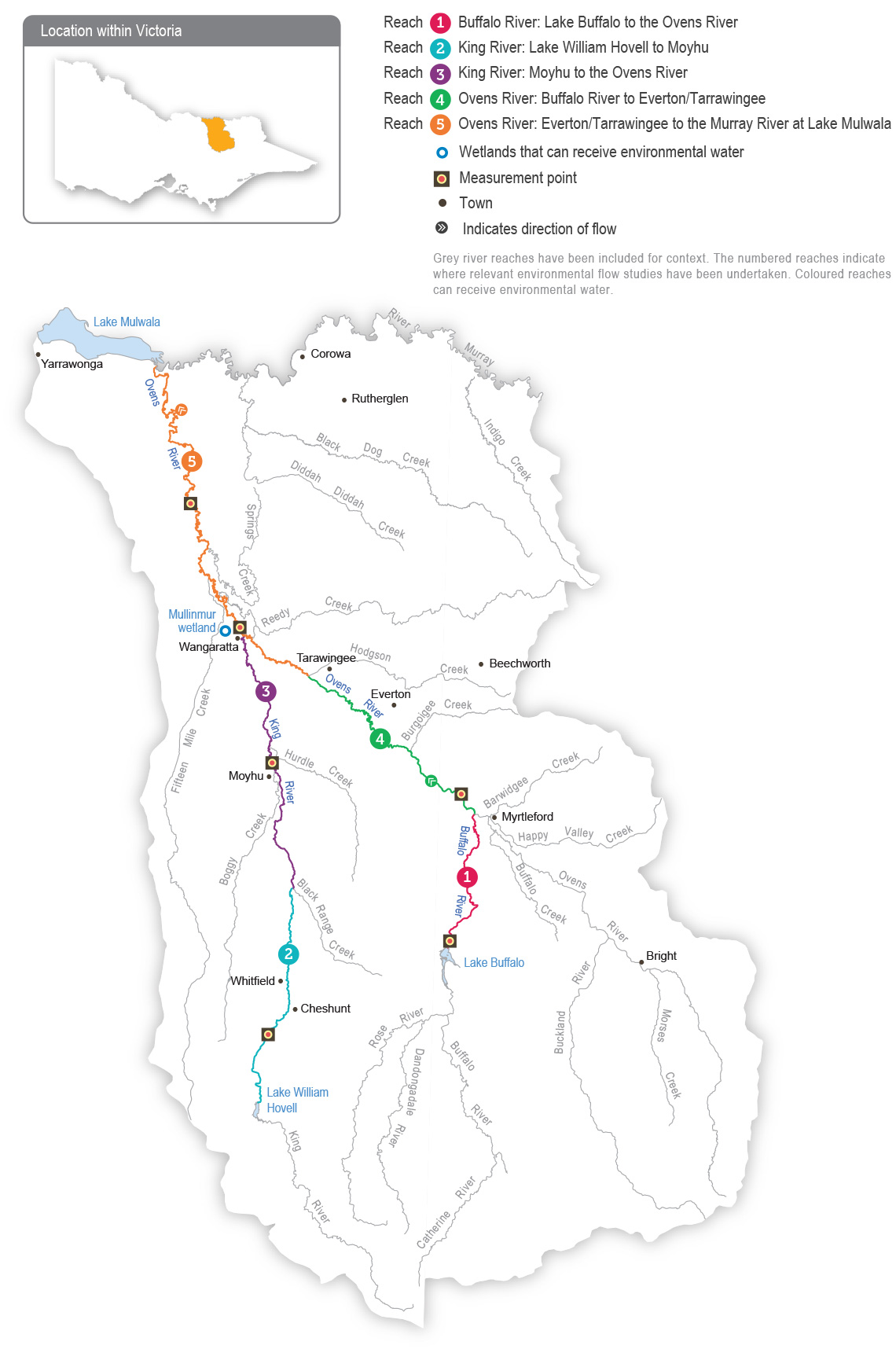As its storages are quite small and spill regularly, the Ovens system maintains a large proportion of its natural flow regime, particularly in winter/spring. However, the storages and licensed water extractions throughout the system can restrict flow in drier years, and parts of the system can become flow-stressed during summer and autumn.
The Ovens River flows into Lake Mulwala on the Murray River; the lake is the largest weir pool on the Murray regulated system. The Ovens River flow contributes to the reliability and variability of the flow in the Murray River and supports many downstream uses, including irrigation, urban supply and watering of iconic floodplain sites (such as Barmah Forest).
Water for the environment is held in Lake Buffalo and Lake William Hovell and can be released when the storages are not spilling. Five reaches in the Ovens system can benefit from releases of water for the environment. While all are important, there is a relatively small volume (123 ML) of water available, and it is insufficient to meet most of the environmental flow objectives. In recent years, private landowners have donated some of their annual water allocations to the VEWH to use in the King River. The Taungurung Land and Waters Council has also transferred some of their annual allocation to the VEWH to be delivered to the King River to heal Country.
The water transfers are used selectively to deliver the greatest possible environmental benefit. Water for the environment is most commonly used in the Ovens system to deliver critical flow events in reaches immediately below the two main storages, or it is used in conjunction with operational water releases to influence the flows of the Buffalo River and the lower Ovens River. It is also used to top up Mullinmur Wetland in Wangaratta.

Proportion of water entitlements in the Ovens system held by private users, water corporations and environmental water holders on 30 June 2020



